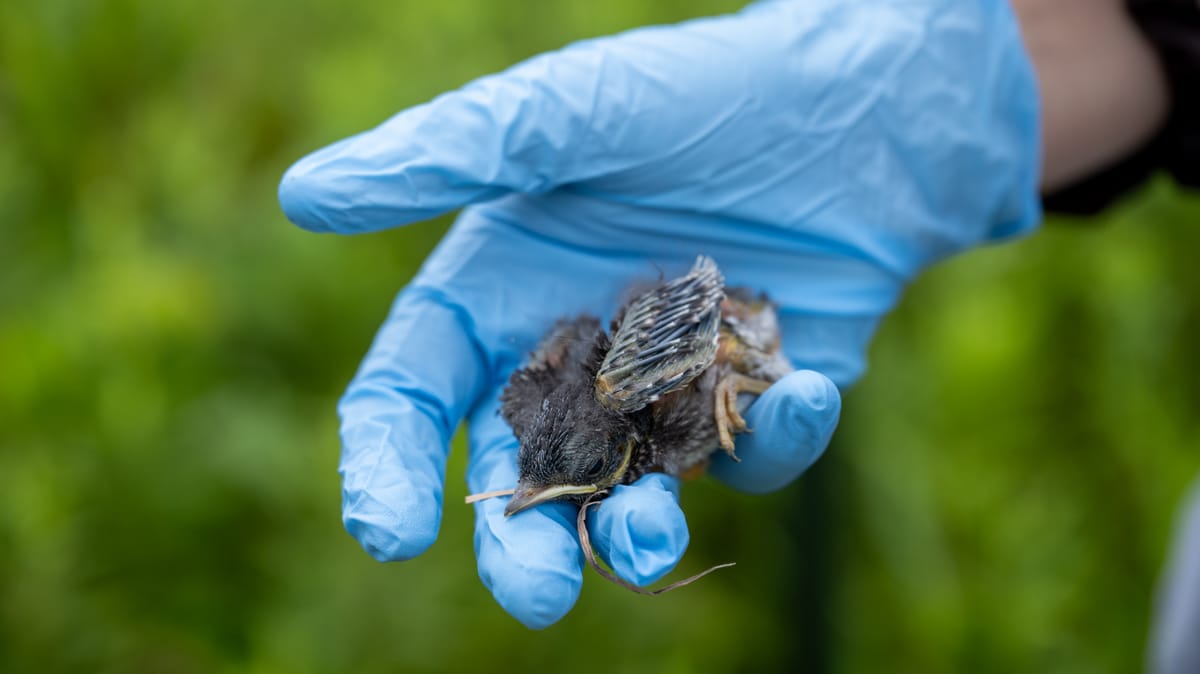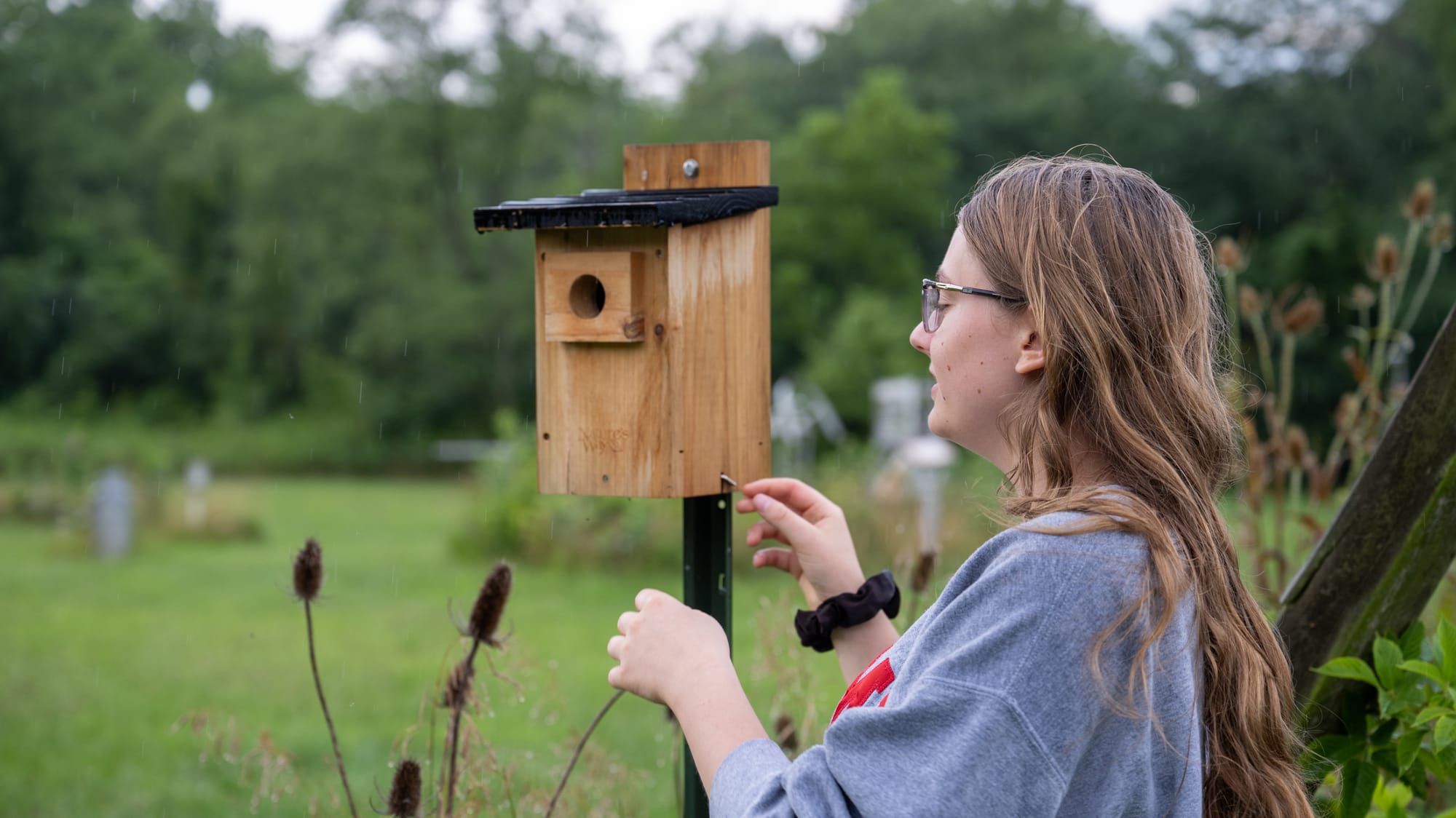Miami University’s Ecology Research Center studies parasites and birds
Ashley Love, an assistant professor at Miami University, studies birds and diseases at the Ecology Research Center

“I feel like a lot of people really care about birds, but they don’t think about parasites a lot,” said Ashley Love, an assistant professor at Miami University.
Love is a disease ecologist focusing on understanding why and how hosts vary, respond and transmit pathogens and parasites. Love is starting her second year as an assistant professor at Miami, and is currently studying diseases and birds at the Ecology Research Center (ERC).
“I fell in love with the curiosity of research and being able to ask new questions,” Love said.
Love first began studying this topic at a lab called Research Experiences for Undergraduates, which was funded by the National Science Foundation (NSF). In this lab, Love studied bacterial diseases in birds, specifically Mycoplasma gallisepticum, which causes pink eyes in them.
The study showed that bleaching your bird feeders and baths could help prevent the spread of the bacteria, and was able to track the spread of the bacteria over time as well as how bird immunity changes over time.
Now, Love has her own study, which features 70 different bird boxes that are spread out across the ERC, a 69-hectare field station northeast of Oxford.
Love is focusing on surveying these animals for blood parasites, such as avian malaria.
“A lot of people have surveyed for this [disease] around the world, it’s really common,” Love said. “But we don’t know a lot about how it affects baby birds.”
Allison Helferich, a rising sophomore zoology major at Miami, has been studying how temperature affects offspring immunity alongside Love at the ERC.
In her own part of this experiment, Helferich experimentally manipulates temperatures in these bird boxes during incubation periods where eggs are incubated.

According to Love, they are doing this “to see if things like climate change, slightly warmer temperatures in the nest have lasting effects on the offspring.”
One thing Helferich has found by counting immune cells in blood samples is that certain cell types, like basophils, may be more affected by temperature changes.
“Preliminarily, there is one cell type called a basophil, which are very important in allergic reaction,” Love said.
Love noted that when humans have a severe allergic reaction, these cells are measured by histamines, which are produced by basophils.
Love believes that histamines may play a role in responding to parasites.
Helferich and Love found that early life developmental temperatures appear to have a long-lasting impact on offspring immune development, which could help make these birds more or less susceptible to parasites.
Love believes that these factors can help answer the main question of the study: “Are rising temperatures, if birds aren’t able to mitigate them, going to affect bird immunity and bird susceptibility to parasites, and what does this mean for the population as a whole?”
The experiment started in May, but Love hopes that it will become a long-term study.
Love chose to study both bluebirds and tree swallows for this experiment for a couple of different reasons.
Firstly, both species are already well-documented and have a deeply studied history, behavior and physiology. Secondly is the fact that these birds are not afraid of humans or people in their areas while they nest.
“Both species are really interesting to look at in tandem,” Love said. “They have very different traits.”
Tree swallows tend to migrate further distances during the winter months, whereas bluebirds tend to stay in similar areas year-round. Tree swallows lay only one set of eggs every summer, while bluebirds can nest up to three or four times.
Love added that the study also measures how the animals respond to different factors around them, such as the environment.
“One species might be handling responses to shifting climate better than another that might make them less susceptible to diseases,” Love said. “We are interested in how all of those things interconnect so we can better understand how the health of avian populations is changing over time.”




